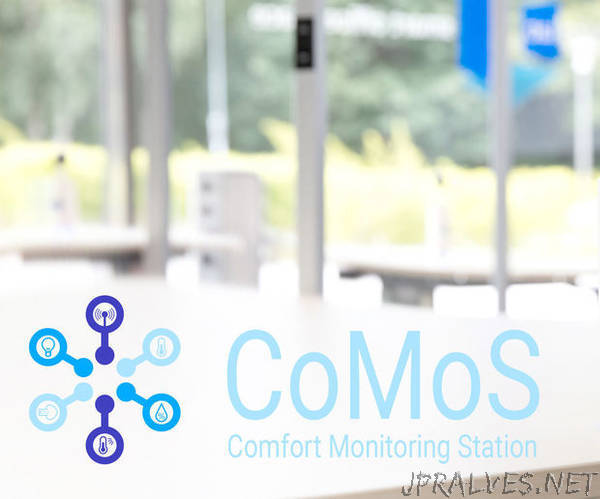
“This instructable describes the design and construction of a so called Comfort Monitoring Station CoMoS, a combined sensor device for ambient conditions, that was developed at the department of the Built Environment at TUK, Technische Universitt Kaiserslautern, Germany.
CoMoS uses an ESP32 controller and sensors for air temperature and relative humidity (Si7021), air velocity (wind sensor rev. C by Modern Device), and globe temperature (DS18B20 in a black bulb), all in a compact, easy-to-build case with visual feedback through an LED indicator (WS2812B). In addition, an illuminance sensor (BH1750) is included to analyze the local visual condition. All sensor data is read periodically and sent through Wi-Fi to a database server, from where it can be used for monitoring and controls.
The motivation behind this development is to get a low-cost yet very powerful alternative to laboratory sensor devices, which are typically at a price above 3000 . In contrast, CoMoS can be deployed comprehensively in (office) buildings for real-time-determination of the individual thermal and visual condition at every single workplace or building section.
For more information about our research and the connected work at the department, check out the official Living Lab smart office space website or contact the corresponding author directly via LinkedIn. All authors’ contacts are listed at the end of this instructable.
Structural note: This instructable describes the original setup of CoMoS, but it also provides information and instructions for a few variations we recently developed: Besides the original case built from standard parts, there’s also a 3D-printed option. And besides the original device with database server connection, there’s an alternative stand-alone version with SD-card storage, integrated WIFi access point, and a fancy mobile app to visualize the sensor readings. Please check the options marked in the corresponding chapters and the stand-alone option in the final chapter.”
